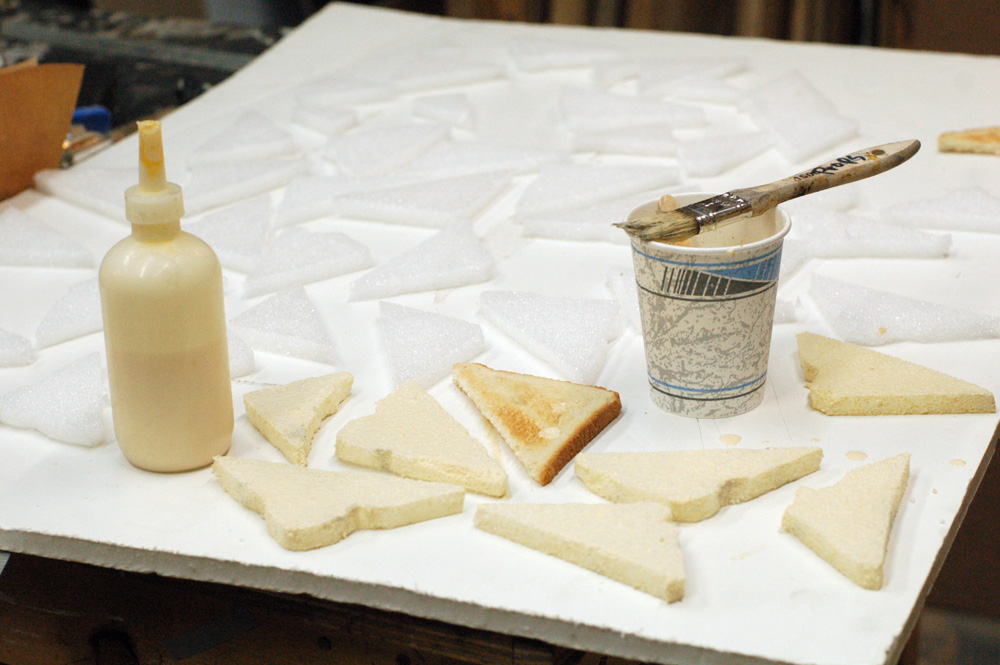Our production of Timon of Athens just closed yesterday here at the Public Theater. It was my first prop master credit at the Public. I’ll probably post some more about this show once I get back from USITT and can go through my photographs, but for today, I thought I’d highlight some of the food, both real and fake.
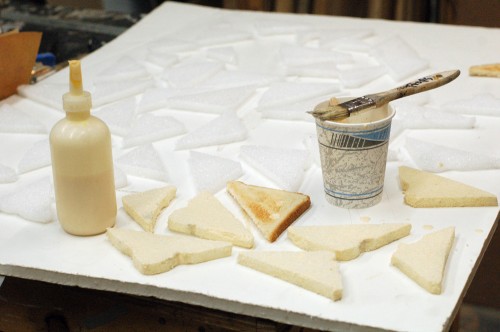
They needed a lot of toast, so I decided to make some fake toast to augment the real toast. I started off with a sheet of white floral foam the same thickness as toast. I cut it into triangles, rounded some of the edges and shaped them a bit to match the pieces of real toast I was using as reference. I needed to coat it in something to make a paintable surface, and I realized that wood glue would not only do the job, it would also serve as a good base color.
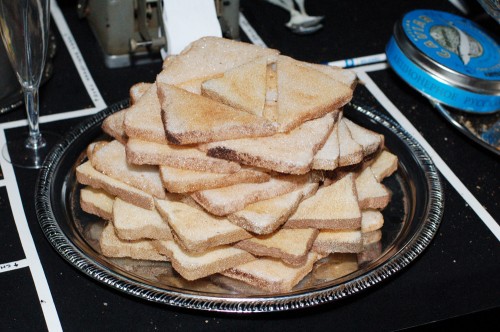
Raphael, one of our interns from last summer, was back on this show as an artisan. He finished most of the toast pieces. He arranged them in the pyramid seen above. Each night, BK, our props runner for the show, made several pieces of toast for the top of this pyramid and for another tray which held the caviar.
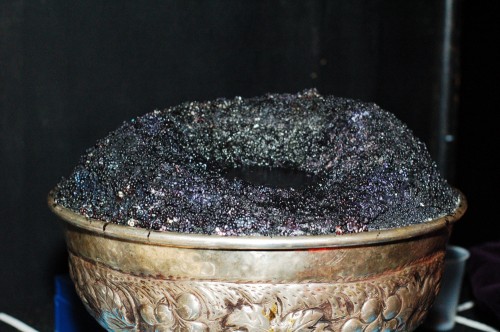
The director wanted an “obscene amount” of caviar during the banquet scene to showcase the ostentatious display of wealth which Timon indulges in. To cut down costs, we decided to fill a bowl with a mound of fake caviar and top it off each night with a real caviar substitute which the actors could eat. I found that pearl couscous and black food coloring made a convincing fake caviar, and it was cheap and easy to prepare as well. Alex, another one of our artisans, set to sculpting a mound of caviar out of white bead foam and painted it. During tech, it turned out that the fake caviar and real caviar did not match closely enough, and the difference was too obvious between the two. I mixed some of the dry caviar with the food coloring and added it to a mixture of glue and water. I spread this over the top of the mound, and when it was dry, coated the whole thing in shellac to seal it and make it food-safe. It was still not quite the same as the real caviar. For the third attempt, Raphael reshaped the mound a bit and repainted it to match the color of the couscous more closely. It finally matched the real caviar enough to make them indistinguishable.
In addition to the toast and caviar, the show also had a scene where a waiter carried around appetizers. Some of these appetizers were picked up by actors and eaten. Neil Patel, our designer, was interested in the really fancy amuse-bouche kind of appetizers you find at so many New York events. From the research he gave me, I came up with the following:
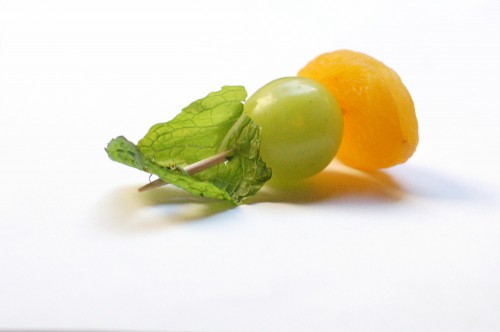
I made the edible appetizers by placing a toothpick through a grape and adding a piece of dried apricot on one end and a mint leaf on the other. They were, in fact, surprisingly delicious.
We wanted to have a lot of appetizers on the tray and decided to make some fake ones so BK would not have to make dozens of real appetizers each night. We also decided to make the fake ones different so the actors would not accidentally eat a piece of fake food.
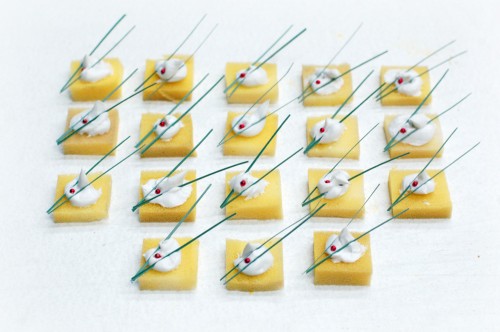
I cut a scrap of yellow upholstery foam into tiny squares. I put a scoop of joint compound in a sandwich bag, cut a corner off of it, and used it like an icing bag to make the swirl of white. The green was some fake grass I clipped and set in while the joint compound was still wet. We had some tiny red beads in stock, so I added one to each to give it a bit more color. I figured it might be a piece of cod roe, in keeping with the caviar theme.
Regular readers already know this, but my friend Anna has far more tips and tricks dealing with fake food on her blog dedicated to that very subject; check out Fake ‘n Bake if you haven’t already.

